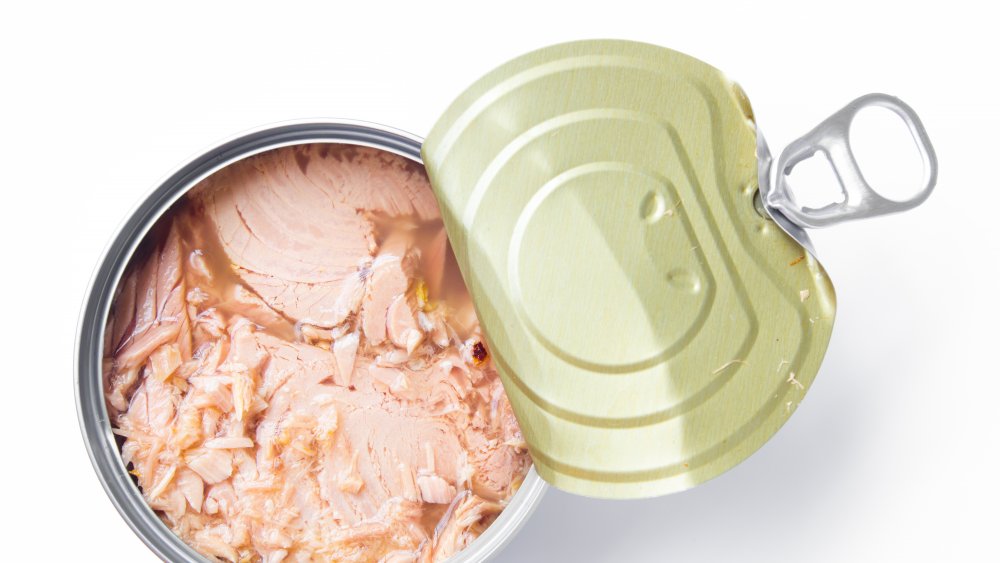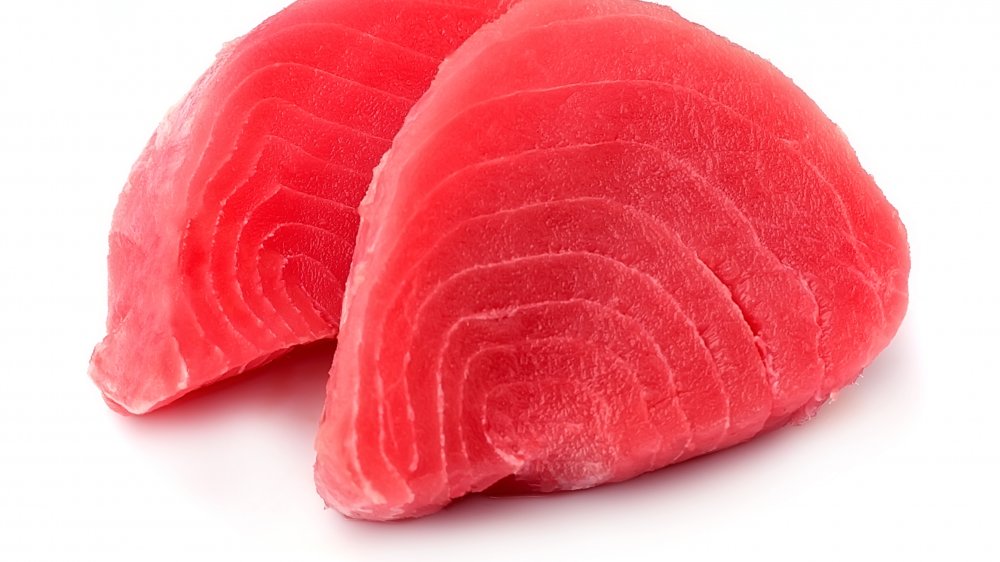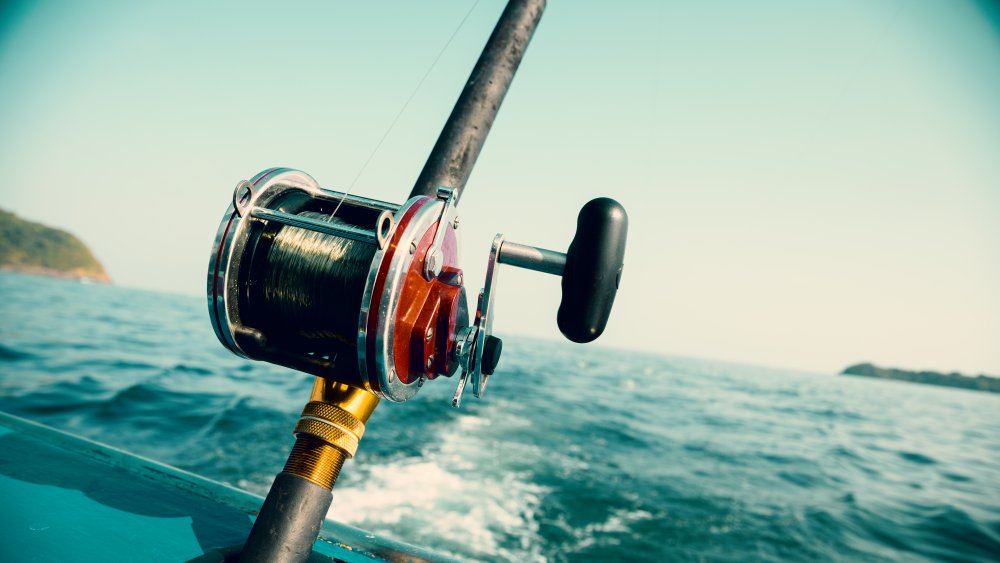Details You Need To Know About Canned Tuna
Canned tuna. It's one of the most versatile, inexpensive, and convenient sources of high quality protein you can pick up at the grocery store, and with fall upon us, it makes a perfect solution to quick school lunches or hearty dinner casseroles. It's such a staple in so many households, we may not give a whole lot of thought to which brand we buy or how the packaged fish affects our health and the health of the environment.
However, there are a surprising number of things to keep in mind when choosing which canned tuna to buy and how often to eat it. Should you rethink your daily tuna salad sandwich? Before you start stocking up on lunch meats, think about your specific health needs.
How canned tuna affects your health
The exact nutrients in canned tuna can vary depending on the type of fish (bluefin, yellowtail, etc.). In general, seafoodhealthfacts.org says that canned tuna is not only an excellent source of lean protein, it's also a good source of essential nutrients like omega-3 fatty acids, selenium, and Vitamin D. The fat-protein ration is roughly 2 grams of fat per portion, with less than 45 milligrams of cholesterol and sodium. In other words, for such a small package, canned tuna packs quite the nutritional punch.
That said, it's important for certain populations to be wary of the mercury levels often found in tuna. Because tuna are a large predator fish, they are highly susceptible to what scientists call biomagnification (via envirobites.org). This is what happens when larger fish like tuna eat smaller animals which themselves contain high levels of mercury. This results in the amplification of the amount of mercury in tuna. Think of it this way: if a small fish has a little mercury in it, it is not likely to affect you much, but when the tuna eats multiple small fish, it accumulates all of that mercury in its own body, therefore becoming higher in mercury than its prey. As a result, health experts recommend pregnant women eat no more than one 12-oz. can of tuna a week to avoid to high a dose of mercury, which can cause abnormalities in a developing baby (via Healthline).
How to find the best value for canned tuna
If you are not among a high-risk group who needs to avoid mercury and are a fairly regular buyer of canned tuna, then it's best to make sure you're getting the best value for your buck. First, depending on whether you are making a salad, a casserole, or eating the tuna straight out of the can, the type of tuna you want may vary (via Spoon University). For instance, some canned tuna is oil-packed, which can offer a more complex flavor, while some is packed in water or even vinegar.
Then you have to decide whether you're looking for chunk tuna or solid tuna. A can of chunk tuna contains a mixture of different of fish, while solid tuna is one single cut of fish. Chunk tuna tends to be less expensive that solid tuna, so if you are making a salad or casserole and would be chopping up or mashing the fish anyway, it may make more financial sense for you to choose chunk tuna.
And if you're looking for a pre-made high-protein snack or lunch, some brands even sell tuna that comes in a bag for convenient on-the-go eating or already packaged in different sauces to negate the need for prep time, so if you want tuna on the menu, so you have many options.
Issues of sustainability with canned tuna
If you're assuming buying the "fanciest" or most expensive brand of tuna ensures you are purchasing the most sustainably caught fish, that isn't necessarily the case. Where the fish is caught, which type of tuna it is, and the method by which it is caught all make a huge difference in whether the tuna you're selecting is sustainable or potentially harmful to the environment (My Recipes). For instance, "pole and line" fishing and "trolling" are two of the most sustainable methods of catching tuna, as they most resemble old fashioned one-man-and-a-rod catching the fish.
Further, certain types of tuna are more able to repopulate than others. Skipjack, a fast-growing species that is plentiful around the globe, is the most sustainable types of canned tuna. Albacore is second on the list, while yellowtail and bigeye rarely are. And bluefin should be avoided at all costs, as it is critically endangered in many places (via The Guardian).
Seafood Watch supplies useful tips on what to look for on labels: check the labels and choose brands that say "pole-caught," "troll-caught" or "pole and line caught." Also, if you can find tuna that claims it is "FAD-free", "school caught", "free school", or "unassociated", you can be sure you are avoiding tuna that was caught in a way that can harm other species, like sea turtles, sharks, and seabirds. Seafood Watch also provides a list of the most sustainable brands, which include Fishing Vessel St. Jude, Mind Fish Co., Ocean Naturals, Safe Catch, Wild Planet, and Whole Foods.



